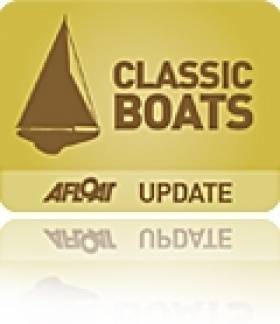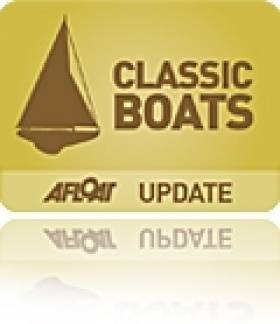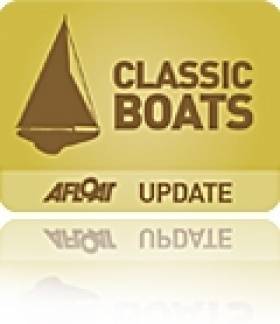Displaying items by tag: Naomh Eanna
Month's Reprieve Not Enough Say Naomh Éanna Campaigners
#NaomhEanna - Campaigners behind the effort to save the heritage ship Naomh Éanna have expressed their disappointment at what they claim is too short a stay of execution for the vessel.
Last Thursday (27 February) the former Galway Bay ferry was granted a one-month reprieve from the scrapheap, following the intervention of the Seanad, to allow interested parties to put together a comprehensive business plan for the vessel.
But Sam Field Corbett, of the SaveOurShip campaign and marine heritage restoration business Irish Ship & Barge Fabrication, said it had been made clear before last week's debates in Leinster House that 16 weeks would be required to prepare such a plan "involving no State funding".
The Naomh Éanna, said to be "one of the last riveted ships built in the world", has spent the best part of three decades in a state of neglect at Grand Canal Dock after her retirement from the Galway-Aran Islands ferry route.
She was destined for the junkyard early last month before the intervention of Seanad members, despite the Department of Heritage rejecting appeals to save her.
Corbett said the four-week window of reprieve rules out the possibility of the Naomh Éanna remaining in the capital, but was happy to report that a berth had been confirmed in her old home of Galway Port.
"Engineers are confident that, after restoration of her hill and machinery, she will sail to Galway under her own steam," he said, noting that "surveyors will continue to quantify the cost of restoration, to be confirmed when the ship is dry-docked."
He also added that designers from his boat restoration business had surveyed the shop and proposed a variety of future uses for the vessel, including a café/bakery and restaurant, a "boutique hostel" and even a microbrewery.
Meanwhile, an online petition has been launched to urge Government to extend the Naomh Éanna's life beyond the present 31 March deadline.
'Save Naomh Eanna' Campaign Courts TDs To Support Heritage Ship's Future
#NaomhEanna - Campaigners hoping to preserve the heritage ship Naomh Eanna have circulated a letter among Dublin TDs to gather support for their restoration plans.
Earlier this week Afloat.ie reported that the vessel, described as the 'last Irish heritage ship', is set to face the scrapheap after spending the last 28 years in a state of neglect at Grand Canal Dock.
Now the Save Naomh Eanna campaign has called on local TDs to put their weight behind a 16-week reprieve for the derelict ship so that a business plan for its restoration can be put together.
Save Naomh Eanna argues that cutting up the ship in the Grand Canal graving dock poses an environmental risk to the waters at the dock as well as a physical risk to the 200-year-old dry dock itself, listed as a protected structure.
The campaign also claims there are "irregularities" in the manner by which Waterways Ireland intends to dispose of the vessel, of which it recently took possession.
Heritage Ship 'Naomh Eanna' Set For Scrapping
#NaomhEanna - A vessel considered the 'last Irish heritage ship' is set to be cut up this week as a campaign mounts to save her from the scrapheap.
The Naomh Eanna was built in 1956 in Dublin's Docklands and previously served as a passenger ferry in Galway Bay between the mainland and the Aran Islands.
Said to be "one of the last riveted ships built in the world", she has spent the last 28 years in a state of neglect at Grand Canal Dock and is reported to be taking on water, though it's believed she retains many of her original fittings and machine parts.
Last week it emerged that ownership of the Naomh Eanna has transferred to Waterways Ireland, who intend to tow her into the Grand Canal graving dock this week to begin disposal.
But according to Sam Field Corbett of marine heritage restoration business Irish Ship & Barge Fabrication, "no consideration was given to salvage and restore her".
Corbett says he is confident that a business plan can be prepared to attract investment for the Naomh Eanna's restoration - but fears that the scrapping plans may proceed with haste before any alternative resolution is considered.
In order for campaigners to save her, some €100,000 costs to Waterways Ireland would need to be met, on top of insuring the vessel and getting permission from NAMA to hold her in dry dock until repairs could begin.































































